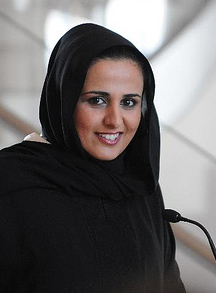
Qatar's princess provides her fellow citizens with the best art
 |
Doha - Qatar has recently invested enormous sums into contemporary art. The patroness is the emir's sister, Princess Majaasa, thanks to whom American Richard Serra was able to erect the sculpture East-West/West-East in the desert, while Brit Damien Hirst set up a series of sculptures representing human embryonic development in front of a hospital in Doha. However, the princess and her museum foundation are encountering a conservative society, and some projects had to be canceled, reported AFP.
 |
| Princess Majaasa, the most influential figure in contemporary art |
Just like her, last year Hirst was introduced to the Qatari public. In front of a hospital on the outskirts of Doha, a collection of his works depicting the development of the human fetus still stands.
Last year, the London magazine Art Review named Sheikh Majaasa the most influential figure in contemporary art. The princess reportedly spends a billion dollars annually in the art market. Her Qatar Museums Authority (QMA) has never confirmed this, but it won’t be far from the truth. For example, the painting The Card Players by Paul Cézanne was bought by the princess for Qatar for 250 million dollars (five billion crowns).
QMA has also approached the largest architects for an exhibition of art museums, of which Qatar will have five next year, a record number for a country with fewer than two million citizens.
However, the sheikh faces a society at home that does not easily relinquish its traditions. Last October, QMA had to remove a huge sculpture from the waterfront, in which Adil Abdassamad immortalized the head of Zinedine Zidane against the Italian Marco Materazzi during the 2006 World Cup final. Critics protested against the piece, claiming that Islam prohibits idolatry and the depiction of people and animals.
Those who want to see "Serra" in the desert must travel there by off-road vehicle. Hirst's sculptures were covered with tarpaulins for several weeks post-installation in January. "I think this conservative behavior is more a defense against the unknown," says Tarek Jaidah, director of the art gallery in Doha. According to him, the next generation will not have problems with this art.
The English translation is powered by AI tool. Switch to Czech to view the original text source.
0 comments
add comment










